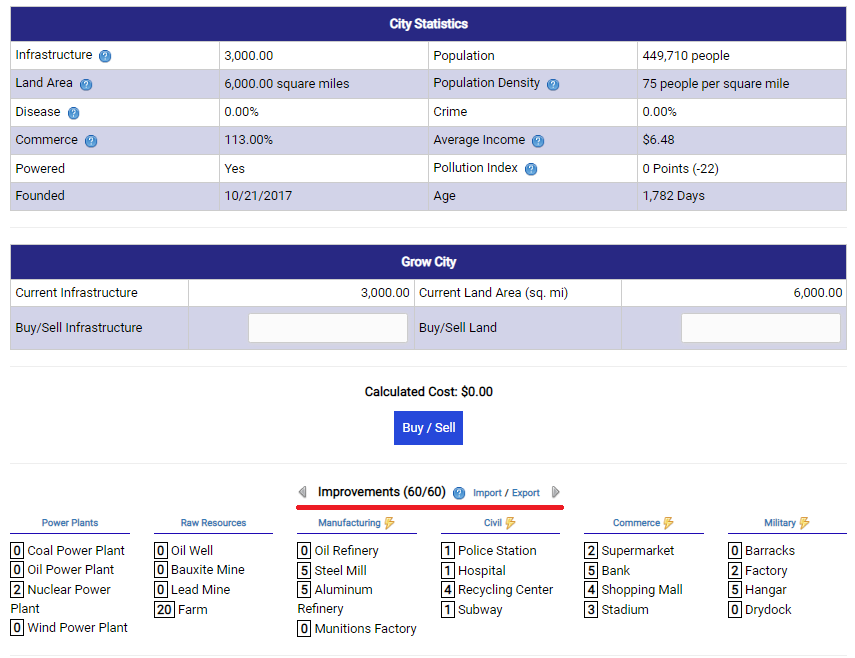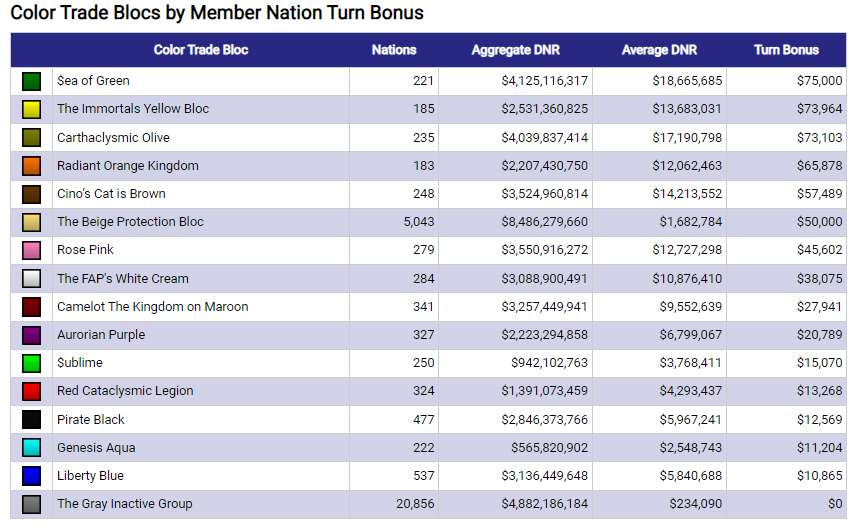In our last article about P&W, which was intended to serve as an introduction, we briefly mentioned the economy aspect, and how it’s crucial to your nation. Today, we’ll be taking deeper dive into this. If you want to read our first article, you can do so here.
It’s more complicated than most browser games, but once you get the hang of it, it’s quite easy to guesstimate how well a nation runs. The economy of nation rests on top of her cities, the amalgamation of all these cities combined makes up a nation’s revenue. Cities, on the other hand, use improvements as building blocks.

Improvements are divided into six categories: Power, Mines, Manufacturing, Civil, Commerce and Military. Here is a short breakdown of each:
- Power concerns the various means to power the city, all power sources require raw materials to operate and money to maintain. Different power sources have different benefits and disadvantages, some are more expensive but don’t contribute to pollution, like Nuclear and Wind, but others are much cheaper but contribute to pollution, like Coal and Oil.
- Mines produce raw resources, and this is where your nation’s location comes into play. Based on the location of your nation, a maximum of three different raw resources can be produced, excluding food. Each costs money to purchase and maintain and is limited to 10 per city and varies in the levels of pollution produced. Mines go hand in hand with manufacturing, as the raw resources are refined into something new.
- Manufacturing requires power to function, and like mines, requires cash to purchase and maintain, but are limited to 5 per city and vary in the levels of pollution produced.
- Civil and Commerce both require power to function and concern population effects and income. Civil improvements exist to negate the negative effects of crime, disease, and pollution. Whereas Commerce improvements exist the commerce in your city and thus, increase the amount of money earned through taxes.
- Military improvements require power to function and concern the military force of your nation. Each military improvement has a limit on how many units can be trained per day and a maximum per city. Barracks are used to train soldiers, factories produce tanks, hangars produce planes and drydocks produce ships. Although not a military improvement, spies are part of your military force and can be used offensively and defensively in a multitude of avenues. A maximum of 50 spies are allowed per nation, and you can only purchase 2 spies/day.

Notable Trivia:
Everything a nation can do is paid for by their income. Which means, the bigger you are, the more income you have, the more powerful you become. As a result of that, players like to control their revenue streams. A major impact to your income are colour blocks.
What are Colour Blocks?
Color Trade Blocs are groups of nations organized around mutual trade. As such, they receive a bonus to their national income that is determined by the size of the national economies participating in the trade bloc, as well as the total number of nations in the bloc.
Colour blocks are used to show whether you are active or not, and often which alliance you belong to. All colour blocs have a turnly revenue bonus, which is the average income of all nations combined, divided by nation count. When you start the game, you’re on beige for 14 days and won’t be attacked, but when you join a colour block, you might be asked to move, or in extreme cases, even attacked.
Best of luck!
